Upper Mustang Festival- Upper Mustang is a remote and isolated region located in the Himalayan mountain range in Nepal. This unique destination is surrounded by towering mountains, deep valleys, and vast expanses of barren terrain. The area is known for its stark beauty which is unlike anything else in Nepal. Upper Mustang is a restricted area which means that visitors require a special permit to enter. This restriction has helped to preserve the region’s natural beauty and cultural heritage, making it one of the least visited parts of Nepal.
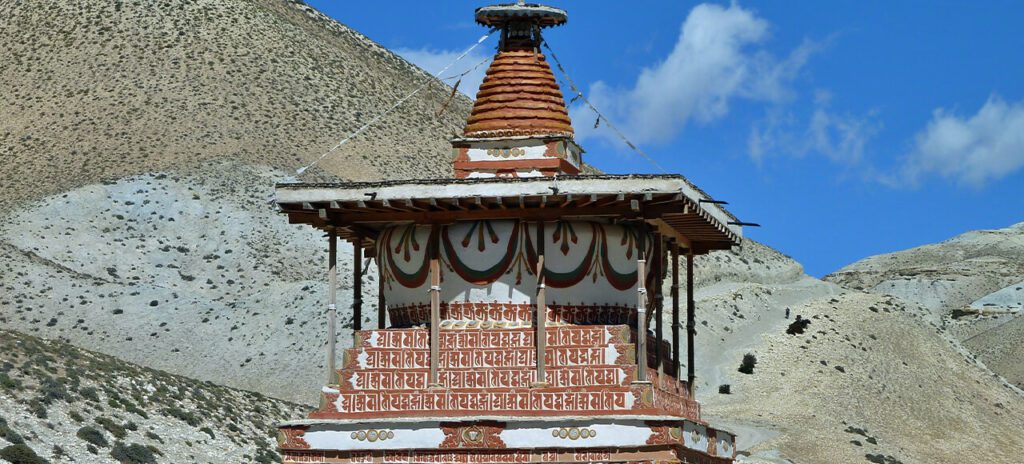
The Upper Mustang Festival is one of the most exciting and unique festivals in Nepal. This festival is held in the beautiful and isolated region of Upper Mustang, located in the north-central part of Nepal. The Upper Mustang region is a hidden gem that has only recently opened up to tourists making it a truly authentic and special place to experience the festival.
When does the festival take place?
The festival takes place every year during the month of May and lasts for three days. It is a celebration of the end of the winter season and the beginning of the spring season. The festival is deeply rooted in the local culture and is celebrated by the people of Upper Mustang with great enthusiasm and joy. The Upper Mustang Festival is a vibrant display of the region’s unique culture including music, dance, and colorful costumes. The locals come together to perform traditional dances such as the Tiji dance which is performed by monks dressed in elaborate costumes and masks.
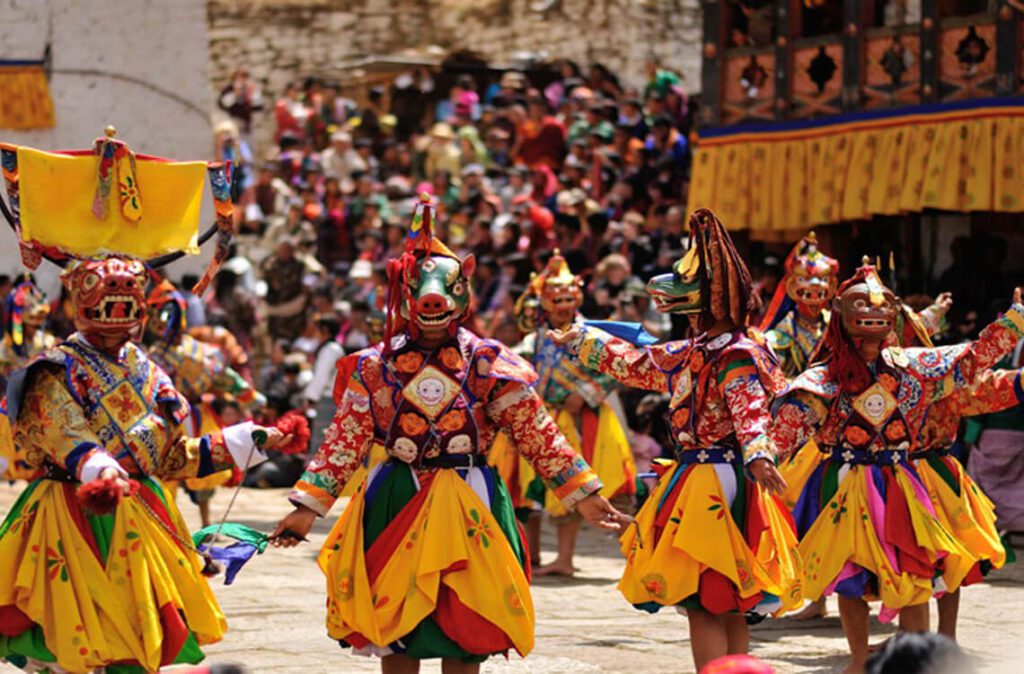
The Upper Mustang Festival is an exciting and unique celebration of the region’s rich culture and history. It is a truly special event that offers visitors an authentic and unforgettable experience of Nepal’s hidden gem. If you are looking for a unique and unforgettable travel experience, the Upper Mustang Festival is definitely worth adding to your bucket list.
Tiji Festival
Tiji event is a three-day event held in Upper Mustang, a rural district of Nepal. The event is held in May and is one of the most popular in the region. It is thought to have begun in the 15th century and is celebrated to commemorate the triumph of virtue over evil. The Lo community, who are of Tibetan heritage and practice Buddhism celebrate the event. Tiji Festival is held in honor of Lord Dorje Jono, a divinity who is said to have fought and destroyed a demon that was causing drought and hunger in the region.
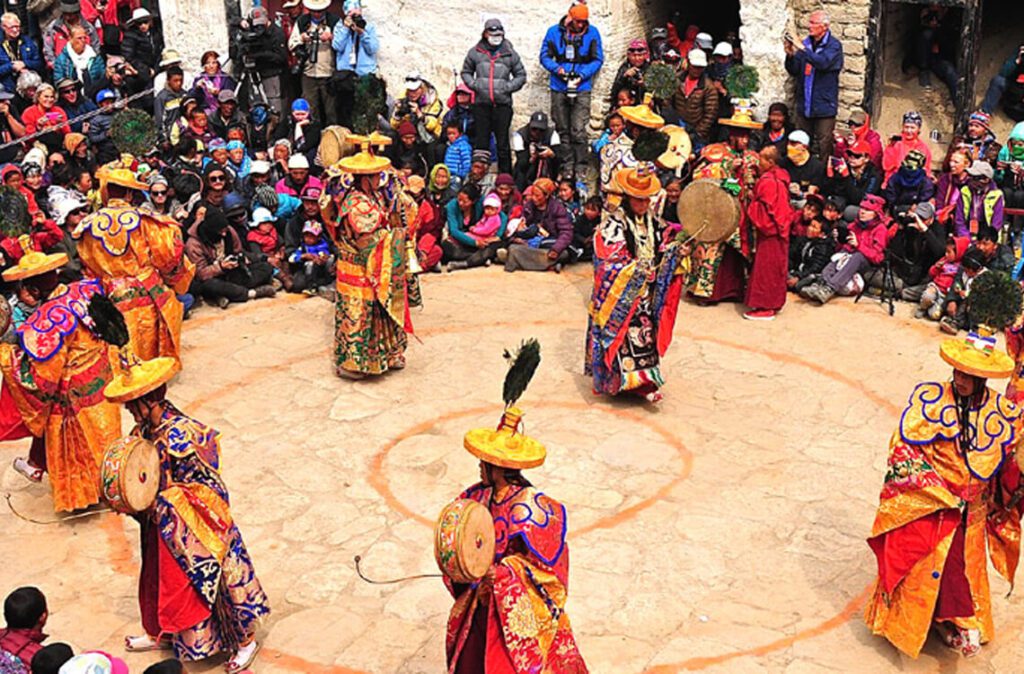
The first day of the festival is known as the Welcoming Ceremony. The monks of Lo Manthang, the capital of Upper Mustang perform a special dance known as the Tsa Chham. The dance is performed wearing traditional costumes and masks and is believed to ward off evil spirits.
The second day of the festival is known as the “Chasing Ceremony.” The monks perform another dance, known as the “Nga Chham,” which depicts the battle between Lord Dorje Jono and the demon. The dance is performed with great vigor and is accompanied by traditional music.
On the final day of the festival, the “Rha Chham” dance is performed. This dance marks the conclusion of the festival and is a celebration of the victory of good over evil. The festival is also a time for families to come together and enjoy traditional food and drink.
Yartung Festival
Yartung Festival is a traditional horse racing festival that takes place in Upper Mustang which is a remote region of Nepal. The festival is celebrated during the month of August and is a popular event among the local people. The festival is celebrated to honor the warrior spirit of the people of Upper Mustang, the festival is a three-day event and is celebrated with great enthusiasm and excitement. The first day of the festival is known as the Opening Ceremony. The local people gather in their traditional costumes and perform traditional dances and music. This day marks the beginning of the festival and it is a time for people to come together and enjoy the festive atmosphere.
Also Read: Upper Mustang Trek in January: Travel Tips, Weather, and More
The second day of the festival is dedicated to the horse races. The horse races are the main attraction of the festival, and people come from far and wide to witness them. The horse races take place on a specially prepared track and the horses are decorated with colorful ornaments and ribbons. The races are competitive, and the riders ride their horses at full speed to win the race. The winner is awarded a prize, and the celebrations continue late into the night.
The final day of the festival is known as the “Closing Ceremony.” The local people gather once again in their traditional costumes and perform traditional dances and music. This day marks the end of the festival, and people bid farewell to each other with great joy and happiness.
Saga Dawa Festival
Saga Dawa is an important Buddhist festival that is celebrated in many parts of the world, including Nepal, Tibet, and Bhutan. The festival is celebrated during the month of June and is also known as the “Triple Blessed Festival.” The festival is celebrated to mark the birth, enlightenment, and death of Lord Buddha.
The festival is a three-day event, and each day has a different significance. The first day of the festival is known as the “Buddha’s Birth Day.” On this day, people celebrate the birth of Lord Buddha by performing special prayers and offering food and alms to the monks.
The second day of the festival is known as the “Buddha’s Enlightenment Day.” On this day, people celebrate the enlightenment of Lord Buddha by performing special prayers and meditation. This day is considered to be a very auspicious day for Buddhists, and people often engage in acts of charity and generosity.
Buddha’s Death Day
The third day of the festival is known as the “Buddha’s Death Day.” On this day, people remember the death of Lord Buddha by performing special prayers and offerings. This day is considered to be a very important day for Buddhists, and people often engage in acts of kindness and compassion.
During the festival, people also engage in a number of traditional activities such as the lighting of butter lamps, releasing of animals, and the hanging of prayer flags. The lighting of butter lamps is done to symbolize the dispelling of darkness and the spreading of light, while the releasing of animals is done as an act of compassion and kindness towards all living beings. The hanging of prayer flags is done to spread positive energy and blessings.
Losar Festival
Losar is a Tibetan New Year festival that is celebrated in Tibet, Bhutan, Nepal, and Tibetan communities around the world. The festival is celebrated during the month of February and is a time for families and friends to come together and celebrate the beginning of the Tibetan New Year.
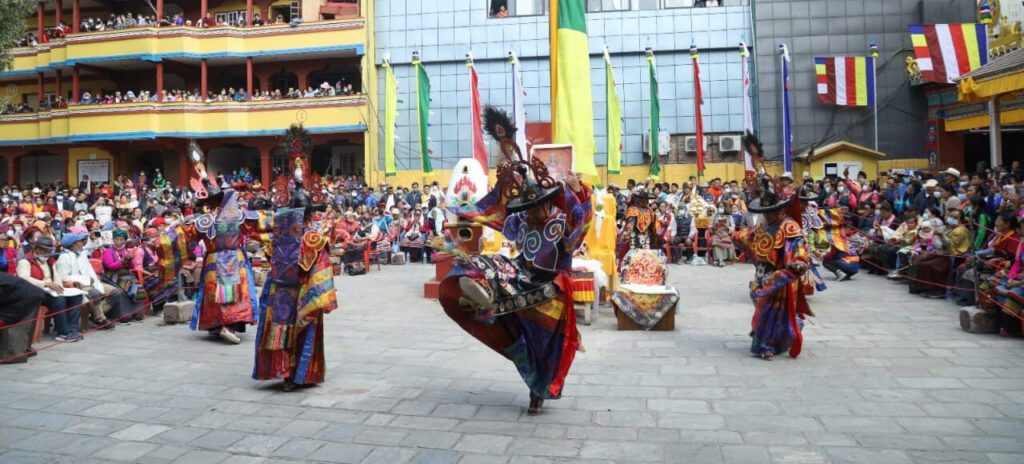
The festival is a three-day event and each day has a different significance. The first day of the festival is known as the Drunken Night or New Year’s Eve. On this day, people gather to celebrate with their families and friends. They prepare traditional foods and drinks and they decorate their homes with prayer flags, colorful decorations, and symbols of good luck. It is also common to light candles and burn incense in homes and monasteries.
New Year’s Day and Offering Day
The second day of the festival is known as the “New Year’s Day.” On this day, people visit monasteries and temples to offer prayers and offerings. They also perform traditional dances, wearing colorful costumes and masks, to drive away evil spirits and bring good luck for the coming year.
The third day of the festival is known as the “Offering Day.” On this day, people visit the homes of their friends and relatives to exchange gifts and good wishes. It is also a day for people to make offerings to the gods and spirits, and to ask for their blessings for the coming year.
More: Best time to do Upper Mustang Trek
Losar is a time of great joy and celebration for the Tibetan people, and it is a way for them to connect with their traditions and culture. The festival is also a time for people to reflect on the past year and set intentions and goals for the coming year. It is a time for renewal and for looking forward to the future with hope and optimism.
Mani Rimdu Festival
Mani Rimdu is an important Buddhist festival that is celebrated by the Sherpa people of Nepal. The festival is held during the month of November and is a three-day event that is celebrated at the Tengboche Monastery, which is located in the Everest region of Nepal.
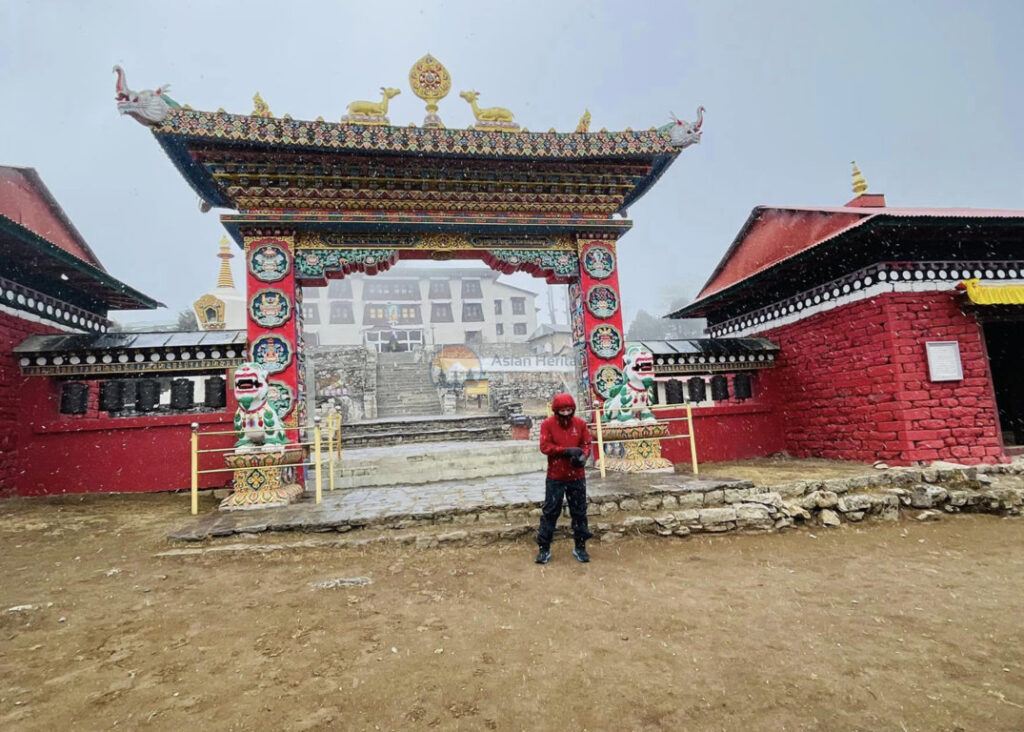
The festival is celebrated to mark the victory of Buddhism over the Bon religion. The Bon religion was the dominant religion in the Everest region before the arrival of Buddhism. Mani Rimdu celebrates the establishment of Buddhism in the region and honors Guru Rinpoche, who is believed to have brought Buddhism to Tibet and Nepal.
The festival is a time for people to come together and celebrate their faith and traditions. The festival begins with the construction of a mandala, which is a symbolic representation of the universe. The mandala is constructed using colored sand and is a complex and intricate design that takes many days to complete.
Cham Dance
On the first day of the festival, there are prayers and offerings made to the deities, and the mandala is consecrated. On the second day, there is a masked dance ceremony, known as the Cham Dance, which tells the story of the establishment of Buddhism in the region. The dancers wear colorful costumes and masks, and the dance is accompanied by traditional music and chanting.
The third day of the festival is the most important day and is known as the Day of the Blessings. On this day, there are special prayers and offerings made to the deities and people receive blessings from the monks. The monks also perform a fire puja which is a ceremony that is believed to bring good luck and prosperity.
Dumji Festival
Dumji is a festival that is celebrated by the people of Upper Mustang, a remote and mountainous region located in Nepal. The festival is celebrated to mark the end of the harvesting season and is a time for people to come together and celebrate their community and traditions. The festival is a three-day event that is held during the month of June. The first day of the festival is known as the Lama Dance and is a day for people to offer prayers and offerings to the deities. On this day, the monks of the local monasteries perform a sacred dance known as the Chham which is accompanied by traditional music and chanting.
The second day of the festival is known as the Public Dance and is a day for people to come together and celebrate with their friends and family. On this day, there are traditional dances, songs, and games, and people dress up in colorful costumes and jewelry. There is also a market where people can buy and sell local products and handicrafts.
Popular: Upper Mustang Trek in August: Weather, Difficulty, Travel Tips, and More
The third and final day of the festival is known as Closing Day and is a day for people to make offerings to the deities and seek blessings for the coming year. The monks perform special prayers and ceremonies, and there is a feast where people share food and drink with their friends and family.
Why Dumji is Important?
Dumji is an important festival for the people of Upper Mustang, as it provides a way for them to come together and celebrate their community and traditions. The festival is also a way for people to express their gratitude for the harvest and to pray for a bountiful crop in the coming year.
The festival also includes a range of other activities, including local food and drink, cultural displays, and market stalls selling traditional handicrafts. Visitors can also explore the beautiful landscape of Upper Mustang, which is known for its stunning mountain scenery and ancient caves and monasteries.
For those who want to experience the Upper Mustang Festival, there are a range of tour companies that offer guided tours of the region. These tours typically include accommodation, transport, and a range of cultural activities and experiences.







